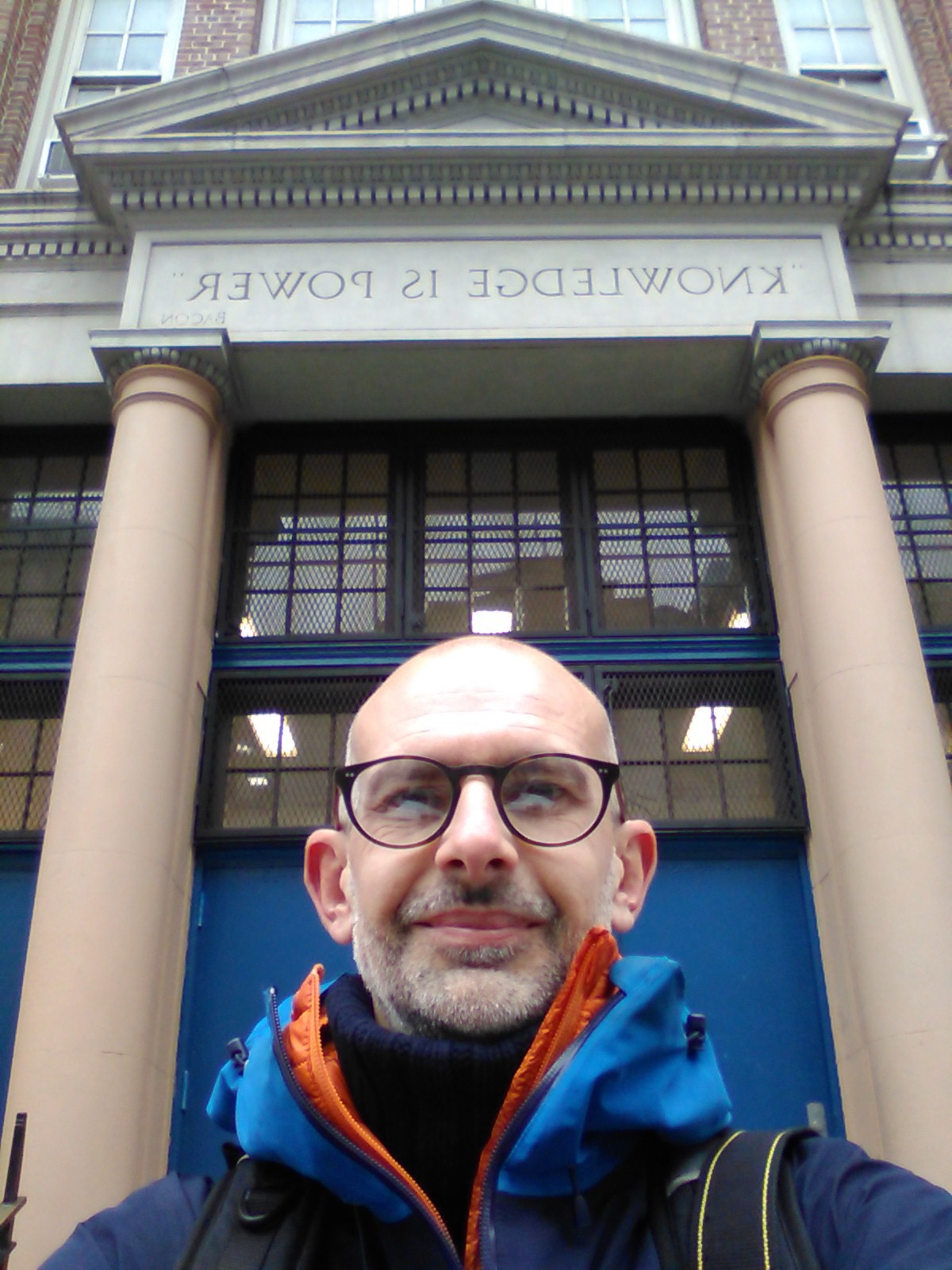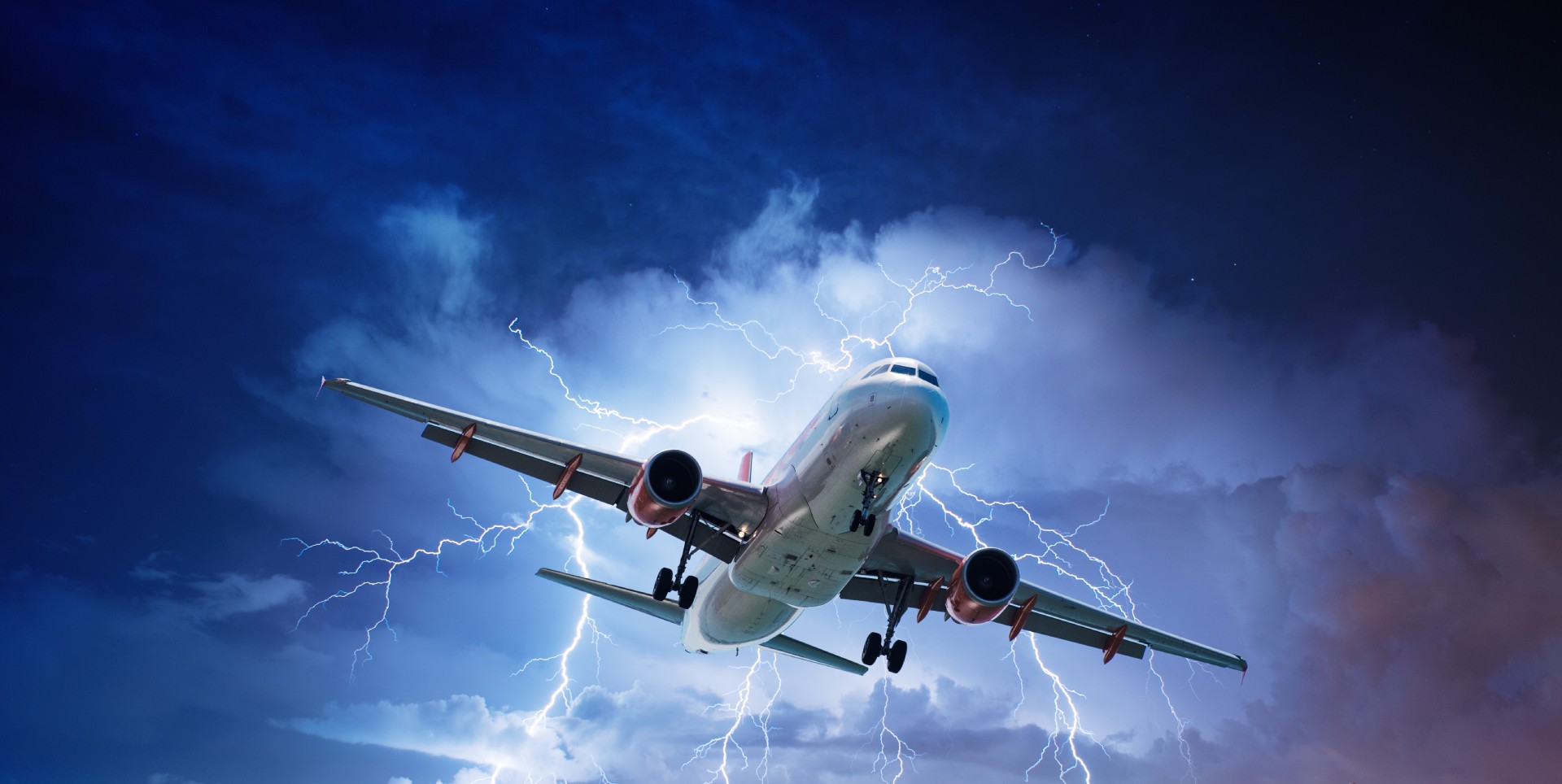Research - Flying without shaking
Newsletter
Who has never experienced a delayed flight because of a sudden thunderstorm on the way to the plane? Those extreme and localised phenomena are expected to rise with climate change, but the good news is that scientists are currently working to improve the predictions of these episodes. We met Riccardo Biondi to find out more.
Riccardo Biondi, in his own words
I have a Master’s degree in electronic engineering and a PhD in atmospheric physics. I have always worked in remote sensing of the atmosphere focusing on extreme atmospheric events such as thunderstorms, tropical cyclones and volcanic eruptions.
Mobility characterised my career since I started working as a fellow at the university where I got my Masters. Then I moved to the European Space Agency doing less science and more managerial work. Deciding to get a PhD, I moved to the Danish Technical University and then back to Italy working for the UNESCO International Centre for Theoretical Physics.
At this stage, I got my MSCA grant at the Wegener Center for Climate and Global Change - University of Graz (Austria), and an AXA Research Fund grant at the Italian National Research Council.
In 2018, I moved to the University of Padova (Italy) where I’m currently working at the moment.
I was the founder and Chair of the Marie Curie Alumni Association Austrian Chapter, and co-founder of the Italian Chapter and the current Chair.
So far, I have been principal investigator of five European and two national projects.

Have you ever experienced severe turbulence on an airplane? This can be very traumatic. Very often, this turbulence is caused by severe thunderstorms.
Weather is indeed the cause of about one fourth of en-route air traffic delays and half of airport traffic delays. “With climate change on the rise, the frequency of storms, winds and rainfall are increasing and they become more intense with a larger expected impact on aviation,” explains Riccardo Biondi.
Our Alumnus mentions other sources of disturbances for planes like fire smokes, desert dust, volcanic ash or sulphur dioxide (SO2) plumes. “They are not as frequent as severe weather but the effect can be extremely disruptive, because they drastically reduce visibility and they can damage the aircraft engines,” he adds.
Solar activity can also affect airplanes’ trajectory. “It can disrupt the radio/satellite communication and degrade the navigation systems (GNSS and magnetic compasses),” notes Riccardo.
To help the aviation sector to face all these challenges, Riccardo has been working for the SINOPTICA project, as Principal Investigator and Work Package Leader.
Predicting severe weather phenomena
Standing for ‘Satellite-borne and IN-situ Observations to Predict The Initiation of Convection for ATM’, the SINOPTICA project aimed to develop a short-term forecasting system (called nowcasting) allowing to predict severe thunderstorms. Thanks to this technology, air traffic managers should be able to adjust the flight trajectories and to ensure the planes avoid critical zones.
“The main objective of SINOPTICA is to predict severe weather, for the first time merging a radar-based nowcasting algorithm in synergy with a very high resolution model assimilating GNSS, lightnings, in situ weather stations’ data to achieve the needed performance in forecasting severe convection,” explains Riccardo.

Our Alumnus notes some challenges related to the execution of this project. “Scientists must clearly understand the needs of the air traffic managers/controllers and the air traffic managers/controllers must understand the capabilities of the actual science. For this reason, several preliminary meetings were necessary to synchronise the actions, to understand each other and to prepare a final product that would be scientifically feasible and practically usable,” he says.
The project’s scientists worked on case studies concentrating on northern Italy, which is one of the most affected areas by extreme weather events in Europe. “One of these case studies focused on the Milano Malpensa airport, where in the last decade, air traffic was halted due to hail storms. Our algorithm was able to nowcast with high accuracy the hail storm that happened on 13 July 2021 and which badly damaged the Boeing 777-300 EK205 travelling from Milano to New York,” explains Riccardo.
Developing algorithms
His alumnus’ journey doesn’t stop with SINOPTICA, as he is also working for ALARM, a project aiming at developing a prototype global multi-hazard monitoring and an Early Warning System.
Standing for ‘multi-hAzard monitoring and earLy wARning systeM’, the ALARM project aims to monitor phenomena like volcanic ash and SO2, dust clouds from sandstorms, smoke from forest fire, severe weather or space weather, by facilitating the exchange of information between the relevant stakeholders.
Working as the principal investigator and also work package leader within this project, Riccardo is developing a nowcasting algorithm for severe weather. “We are a team of four scientists working on it and we are developing algorithms based on machine learning techniques able to provide high performances in extreme weather predictions,” says Riccardo.
Our Alumnus highlights that the collection of meteorological data has been challenging, as it involved several institutes with different rules and different data formats. What’s more, the COVID-19 pandemic caused the cancellation of a campaign aiming at implementation of measurements in an international airport.
Despite these challenges, the project can already boast some great results, like the Early Warning System which collects outcomes and allows to visualise all the possible volcanic events threatening aviation safety. The website also intends to include weather events.
Riccardo is happy to have conducted research on both projects. “I like projects in which the research can be combined with ‘real world’ problems. I like to see how the research can be applied to daily life, and to keep in touch with different audiences to understand their perception of my work as a scientist. These two projects together gave me the possibility of getting these feelings,” he reflects.
Training the future generation
Riccardo is also spreading his knowledge, as in 2015 he founded the training school ‘Convective and Volcanic Clouds (CVC) detection, monitoring and modeling’ addressed to young scientists, with the objective of training future generations.
He could happily involve the school in both projects. “The collaboration between the CVC school and the two projects was beneficial for both parties, the school was enriched with the expertise coming from the projects, and the projects got a relevant occasion to disseminate the results,” he says.
To him, all this work involved was worth it. “Today I can say that it was a good vision, the school has been organised annually, it was well recognised by the scientific community receiving the support of the European Geosciences Union and other scientific and governmental entities and so far it trained almost 200 young scientists coming from all the continents,” he adds.
We wish him and the school a lot of success to make our future airplanes’ trips as smooth as possible!
Aurélia Chaise
MCAA Editorial Team